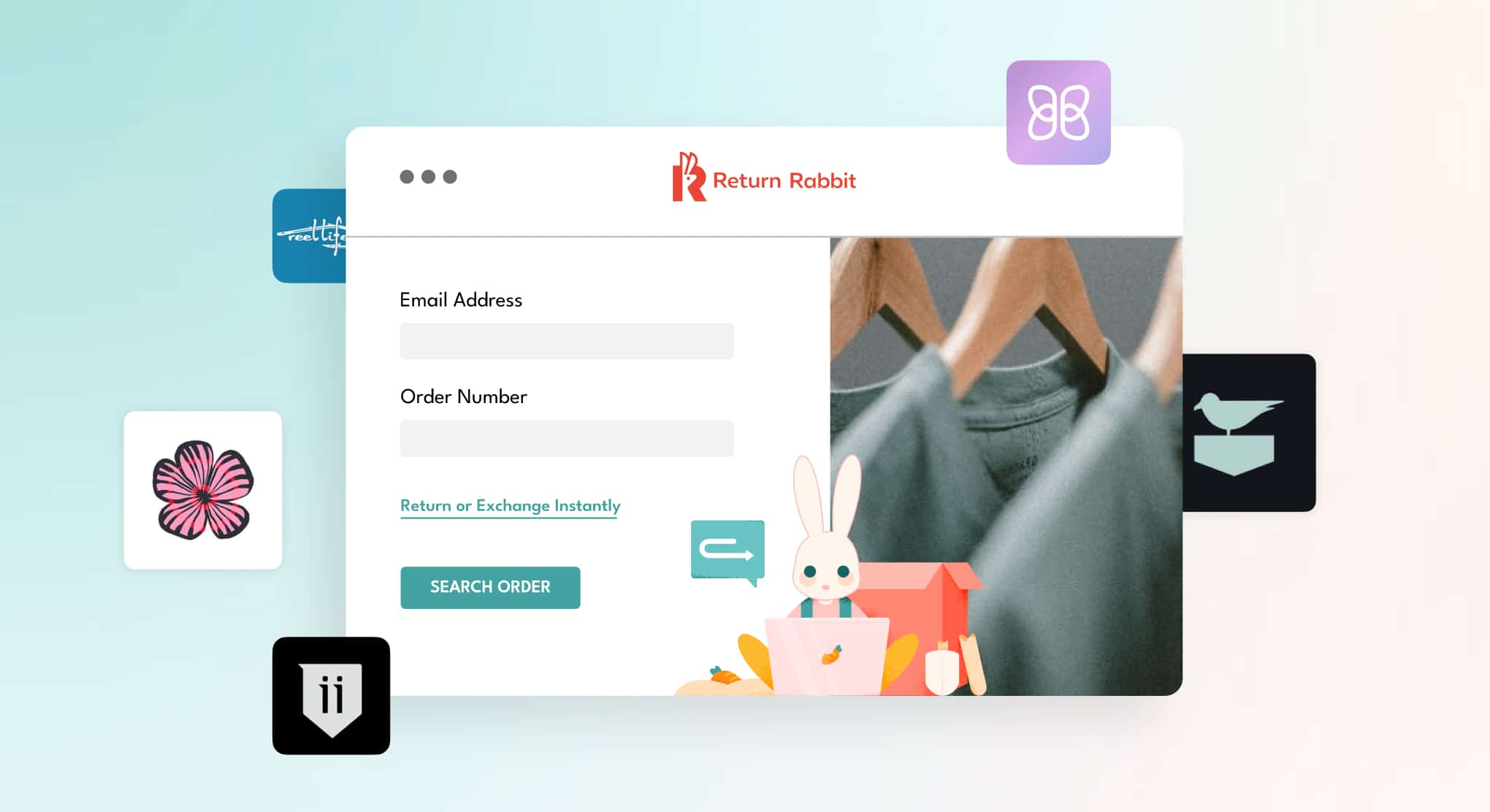2023 was a record year for Shopify businesses, earning more profit, winning more customers, and selling more products than ever before. However, such an increase in online sales means that returns have also skyrocketed.
But returns are inevitable. Customers may select the wrong size or color, or maybe the product description wasn’t thorough enough to make a definitive decision. In this scenario, businesses have two options: offer a return or stick the customer with the item. Which do you think is likely to increase customer satisfaction and retention?
It’s a myth that returns are a cost-suck for businesses. Prioritizing returns management allows Shopify businesses to reach their full potential, earn more revenue, and foster customer loyalty.
Let’s delve into the power of an automated returns management system and statistics that should impact your business’s 2024 returns strategy.
Pivotal stages of the customer journey
Customers go through many phases in the buying process, but the core stages are pre-purchase, purchase, delivery, and returns. A 2024 Ecommerce Delivery Benchmark Report by Auctane, Return Rabbit’s parent company, breaks down the key data points of the 4 stages of customer experience:
- Pre-purchase: 62% of shoppers typically start their customer journey browsing online rather than in-store to discover and compare products.
- Purchase: 47% of all shoppers proceed to buy items online rather than purchase in-store. 20% of shoppers that browse online, will buy in-store.
- Delivery: Of these online buyers, 74% will opt for home delivery, and 26% will opt to collect from a store, locker or other location.
- Returns: When it comes to returns, there is a fairly equal split in preference between returning via courier (30%) or post (19%), and returning to store (26%) or other drop-off points (25%).
Understand your customers on a more personal level
2024 will require Shopify brands to put a larger emphasis on personalization throughout the pre- and post-purchase experience. Each customer journey is unique, and shopping and return preferences are heavily influenced by factors like age, product type, socioeconomic status, and more. By understanding customer characteristics, your brand can tailor the returns experience to what suits your customers’ wants and needs.
Customers between 18 and 45 are omnichannel superstars, often starting their shopping online but transitioning to physical options like out-of-home delivery and in-store returns as their journey progresses. On the other end of the spectrum, customers over 45 browse and buy less often online, but prefer home delivery and online-initiated postal returns. This generational difference will greatly impact how retailers approach returns.
According Auctane’s 2024 Ecommerce Delivery Benchmark Report, 51% of consumers prefer the ease and simplicity of in-home or self-service returns. But then there’s the other 49% who prefer physical returns, opting for in-store returns or designated drop-off points.
Older demographics find comfort in returning items with the postal system, while Gen Zs and Millennials value the flexibility of out-of-home returns. To ensure a pain-free post-purchase experience, brands will need to offer a variety of return options for customers to choose from.
PSA: Free returns may no longer be sustainable
The time many brands have feared is finally here. Free online returns are quickly becoming an increasingly unsustainable option from both a financial and environmental standpoint. Returns often end up in a landfill, and with sustainability top of mind for customers and retailers alike, the ecommerce industry is reaching the point where free returns may no longer be the norm.
For brands shuddering at the idea of having customers pay return shipping on products, there’s hope yet. In 2024, 28% of shoppers are willing to pay for returns (typically in the form of return postage), up from 24% the previous year. To avoid the situation entirely, some brands refund customers and ask them to keep the product, whether it be faulty or simply the wrong color.
Customers often view a free return policy as a risk-free opportunity to purchase multiple items with no intention of keeping it all. The “amazon effect” has made free, quick returns a routine part of the online shopping experience, particularly within the apparel industry. Unsurprisingly, the apparel companies have the highest return rate of all retail categories, averaging 13% across both in-store and online transactions, but hovering as high as 30% for online.
In an effort to lower return rates, Shopify brands can implement several strategies:
- Detailed product descriptions: No two products are the same, so to reduce product returns, it’s critical that product descriptions are accurate and detailed. Descriptions should include weight, dimensions, size guidelines, and material.
- Accurate photography: It may go without saying, but your product images should be as accurate as possible. If your bright blue shirt is photographed looking emerald green, it’s impossible for your customers to make an informed decision.
- Integrate reviews: Sometimes, products can vary greatly in sizes between colors and styles and the retailer may not be aware. Having reviews from customers on product pages can help prospective customers make more informed decisions.
- Virtual reality technology: Shopping in-store has a lot of advantages, one being able to try the product before purchasing. The customer can feel the material and try it on to ensure that it’s 100% what they’re looking for. Virtual reality helps online shoppers have that same experience.
Merchants need an omnichannel return solution
The common factor in all stages of the customer journey is that customers crave convenience. Omnichannel returns allow customers to choose the most convenient returns method for them, whether that’s in-store, pickup, or dropoff. Making returns a more personalized experience eliminates the added stress for shoppers, increasing customer satisfaction and loyalty.
However, charging a fee for returns can certainly disrupt the process. In Auctane’s 2024 Ecommerce Delivery Benchmark Report, when asked about charging for returns, 39% of shoppers would return in-store for free, 36% would shop less with a brand, and 17% would join a loyalty program for free returns. Only 8% of shoppers would opt to pay the return fee.
To make the return process as favorable as possible, brands need to offer a multichannel returns solution such as:
- Free in-store returns: If your business has physical stores, it’s imperative to offer free in-store returns. It reduces shipping costs for you and your customer and allows for returns to be processed quickly. Plus, when a customer is in store, they are more likely to add to their shopping cart before returning their item.
- Loyalty membership: A loyalty program rewards customers for their devotion to your brand, and it can be used to further incentivize future purchases. If your business model requires charging for returns, a membership program (for a small fee) can waive these costs and reward loyal customers with a seamless return experience. This new model not only attracts new loyalty program sign-ups but also minimizes the financial drain of returns.
- Curbside returns: It doesn’t get more convenient than curbside pickup! In this scenario, customers can drop off their returns without stepping into the store.
Via mail carrier: Returning via UPS, USPS, or FedEx is the most common way to return items. If you don’t want your customers to have to print out their labels and repackage the product, retailers can offer printerless returns. This way, customers can simply go to the carrier with their unpackaged item, show a QR code, and they’re good to go. - Home pick-up: Brands can partner with DoorDash or USPS to give customers the option to schedule a return pickup right from their home. While this is certainly the most convenient way for a customer to return an item, it tends to be the most expensive course of action.
Win the return game in 2024
The ecommerce landscape is rapidly changing and evolving, but one thing remains constant: customers like options. They want to shop and return items in whatever way is most convenient to them at the time. However, with the growing financial and environmental impact of returns, brands need to prioritize product accuracy and promote their return policy so customers can feel confident buying online.
Enough reading about it, it’s time to integrate automation into your returns management strategy for 2024! Learn more about Return Rabbit’s leading automated returns management solution and start your free trial today.




